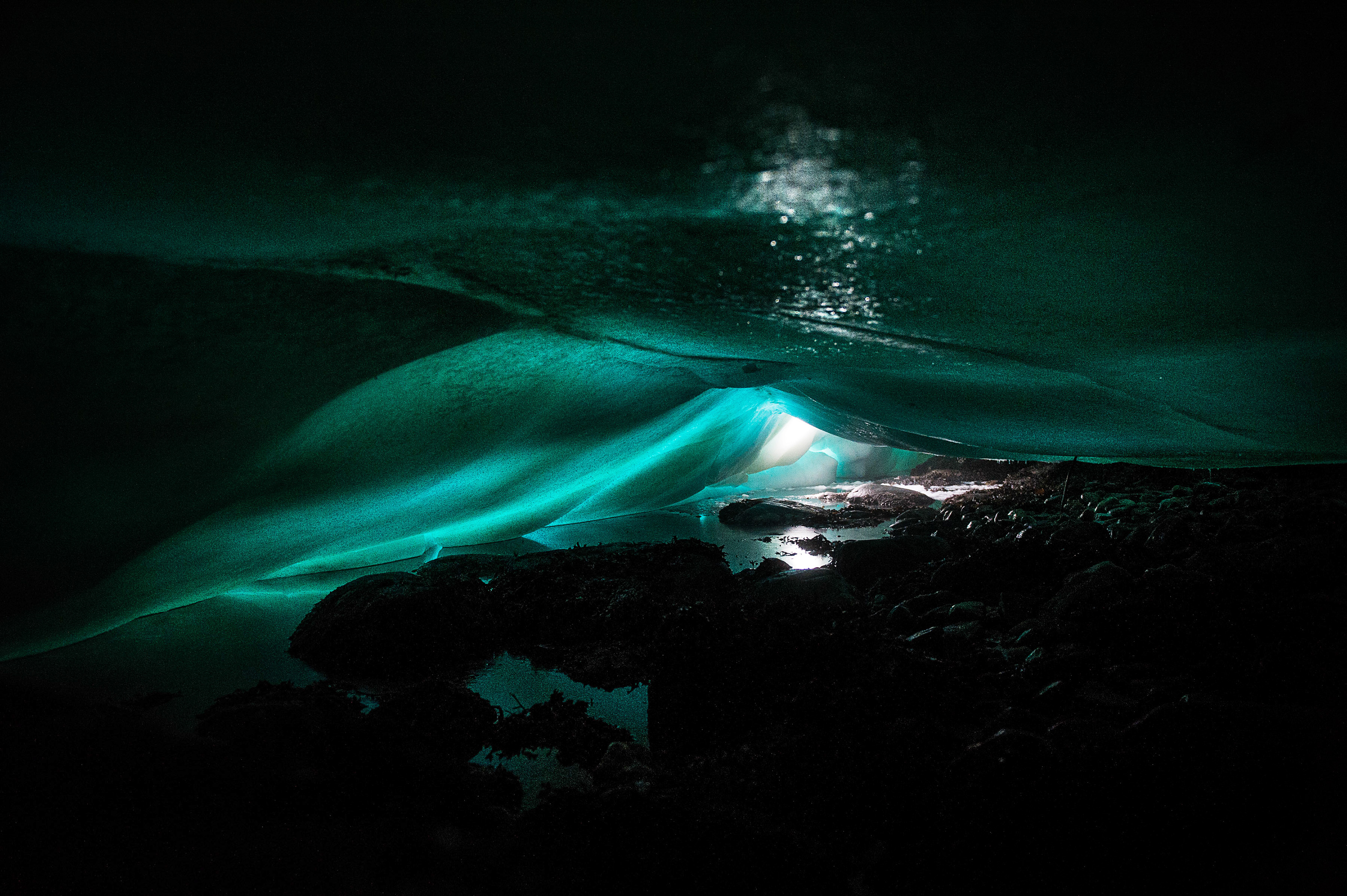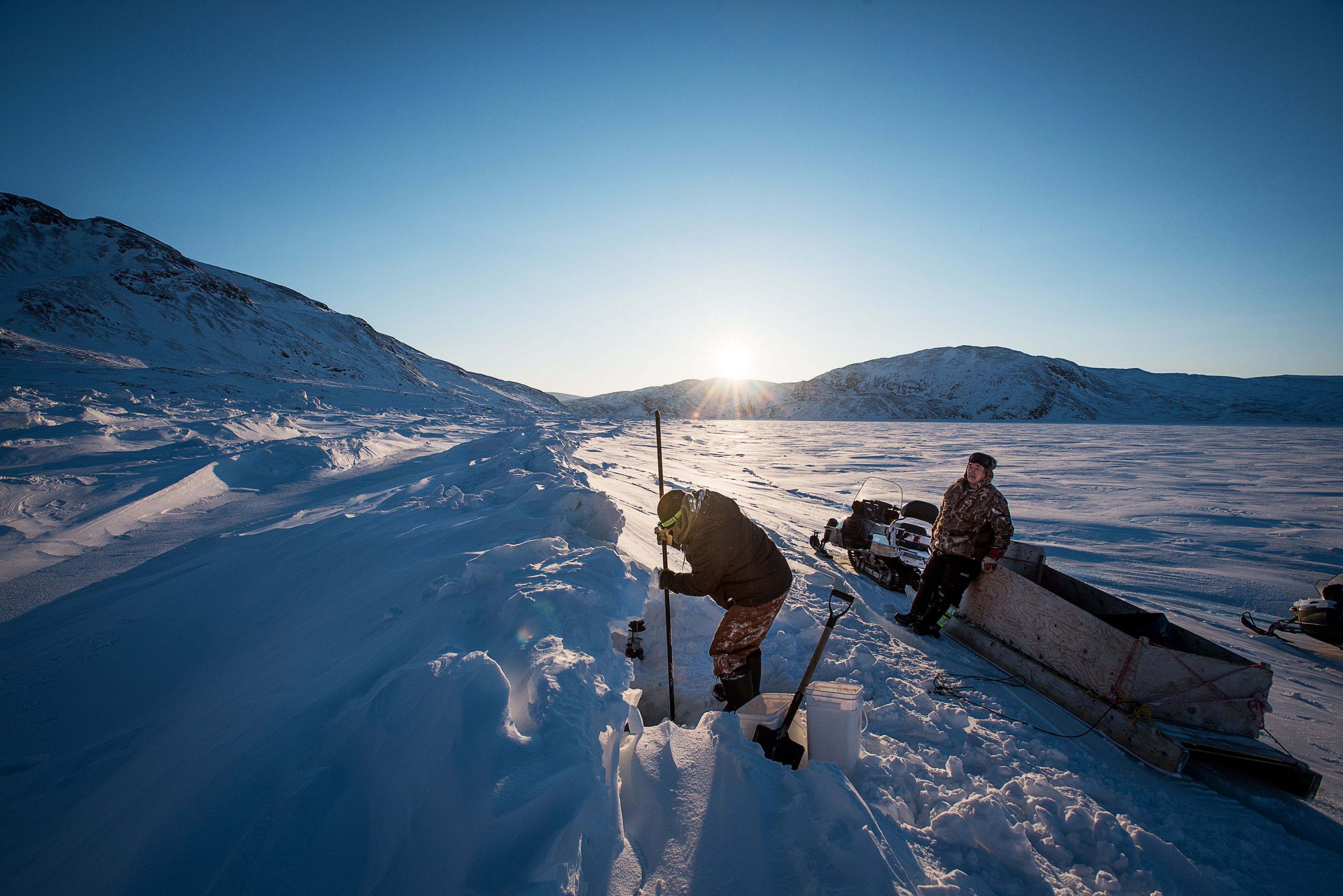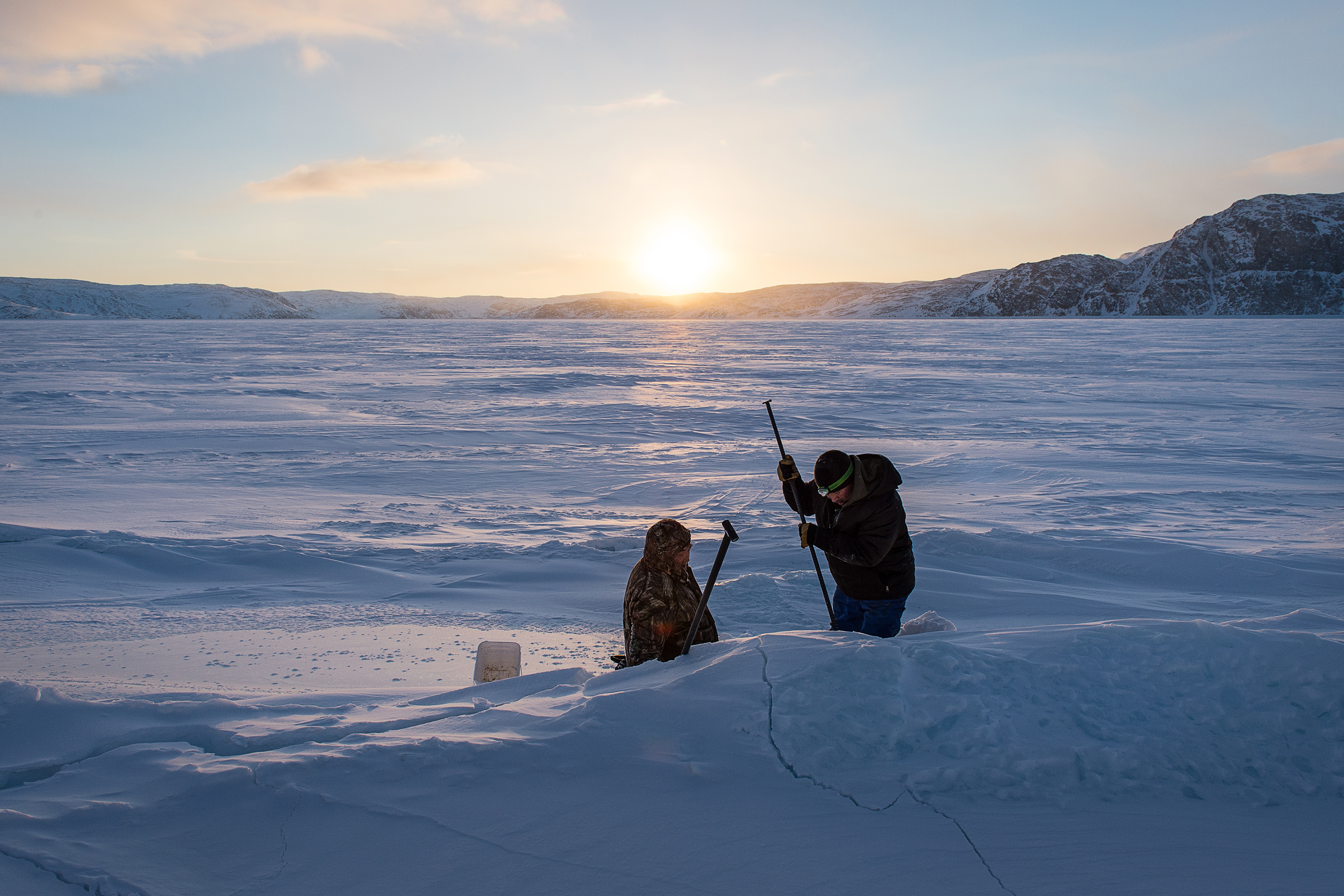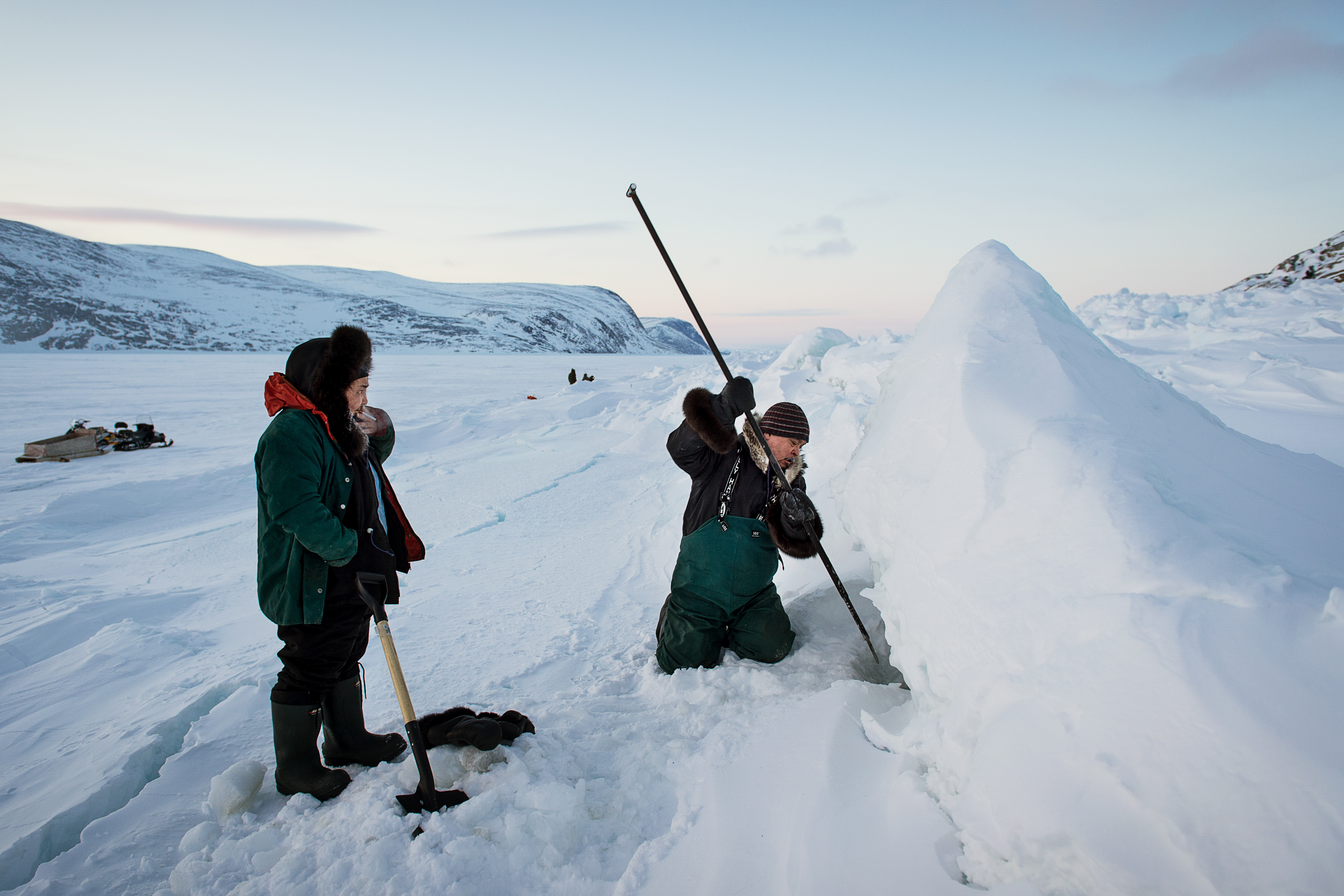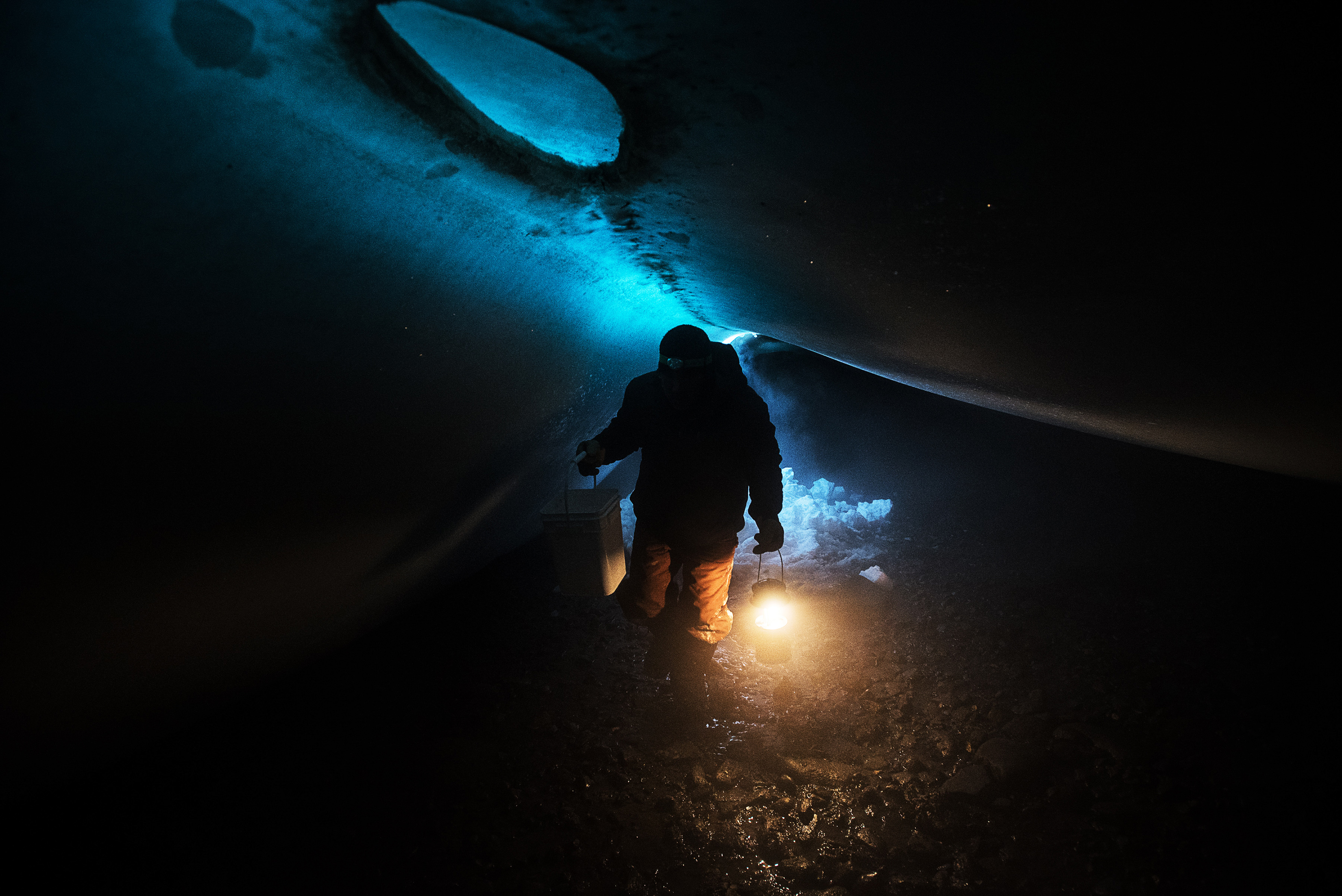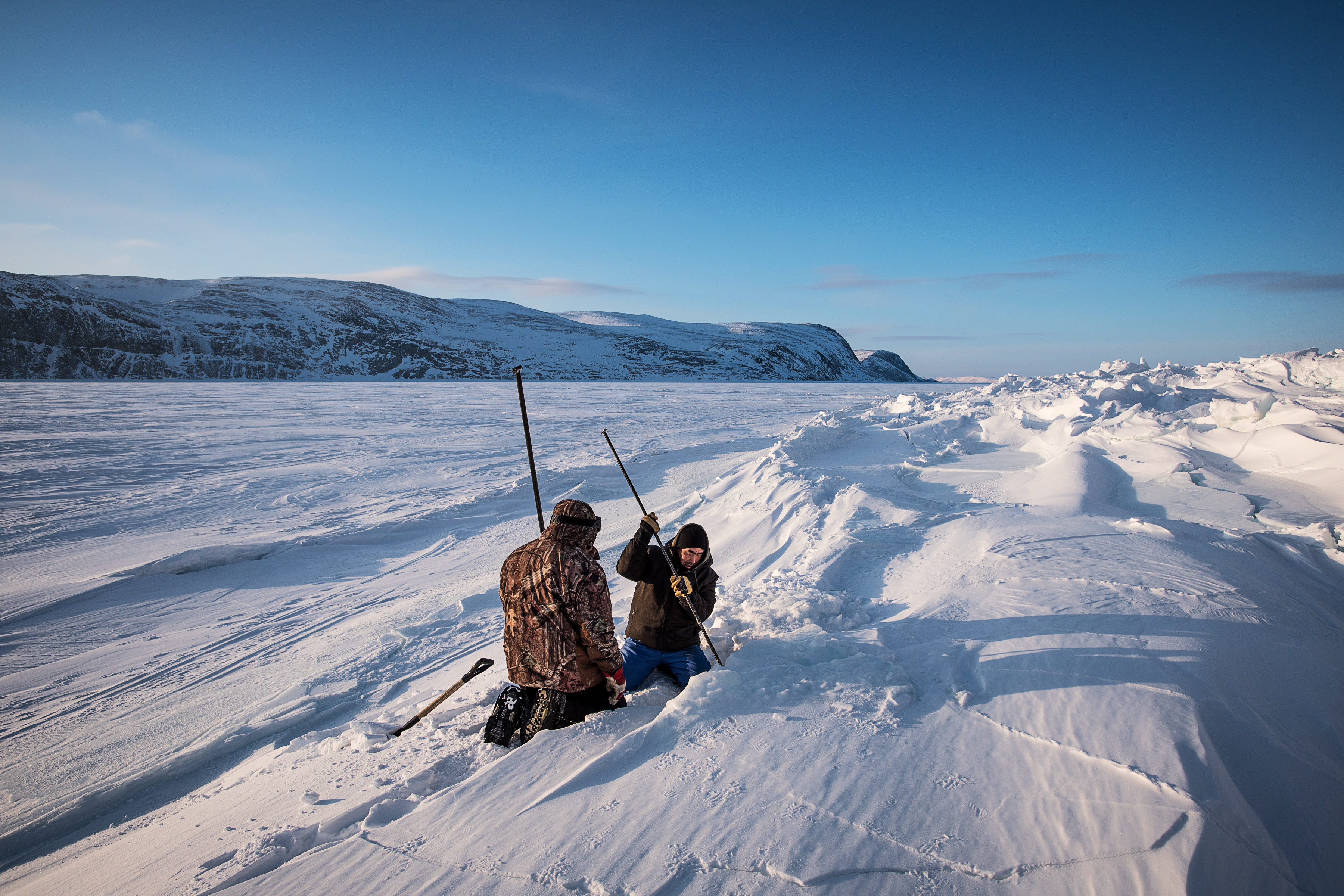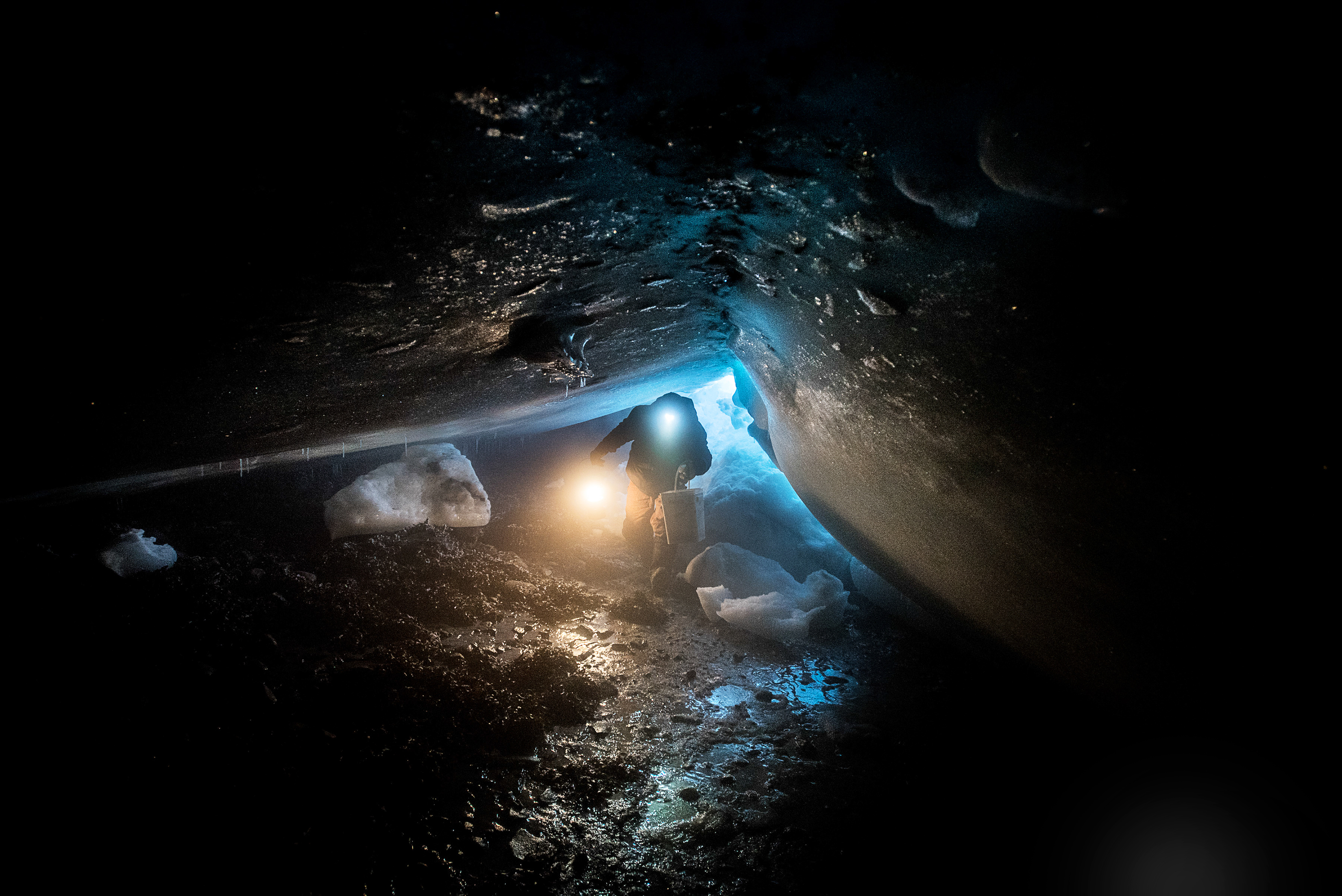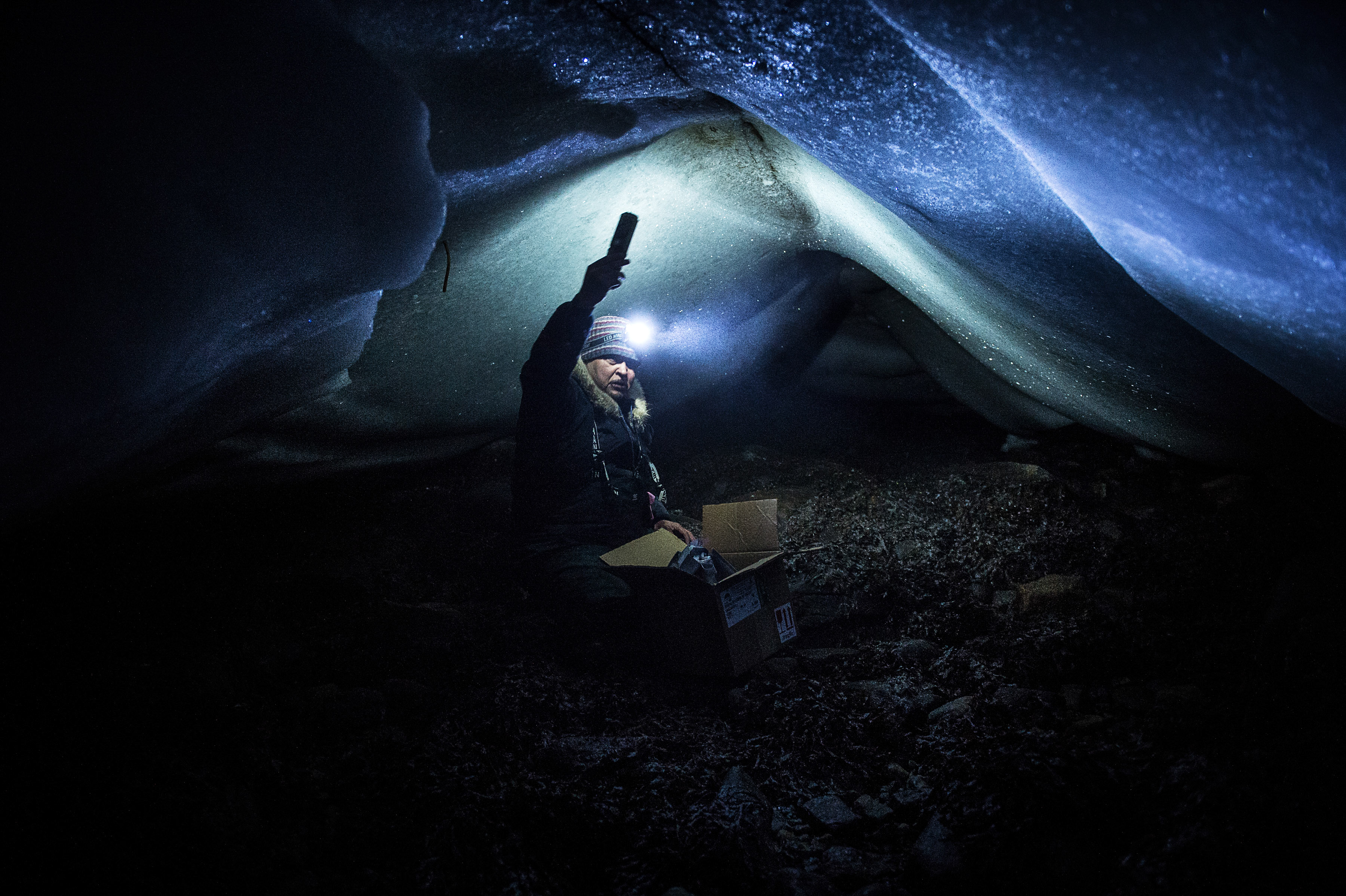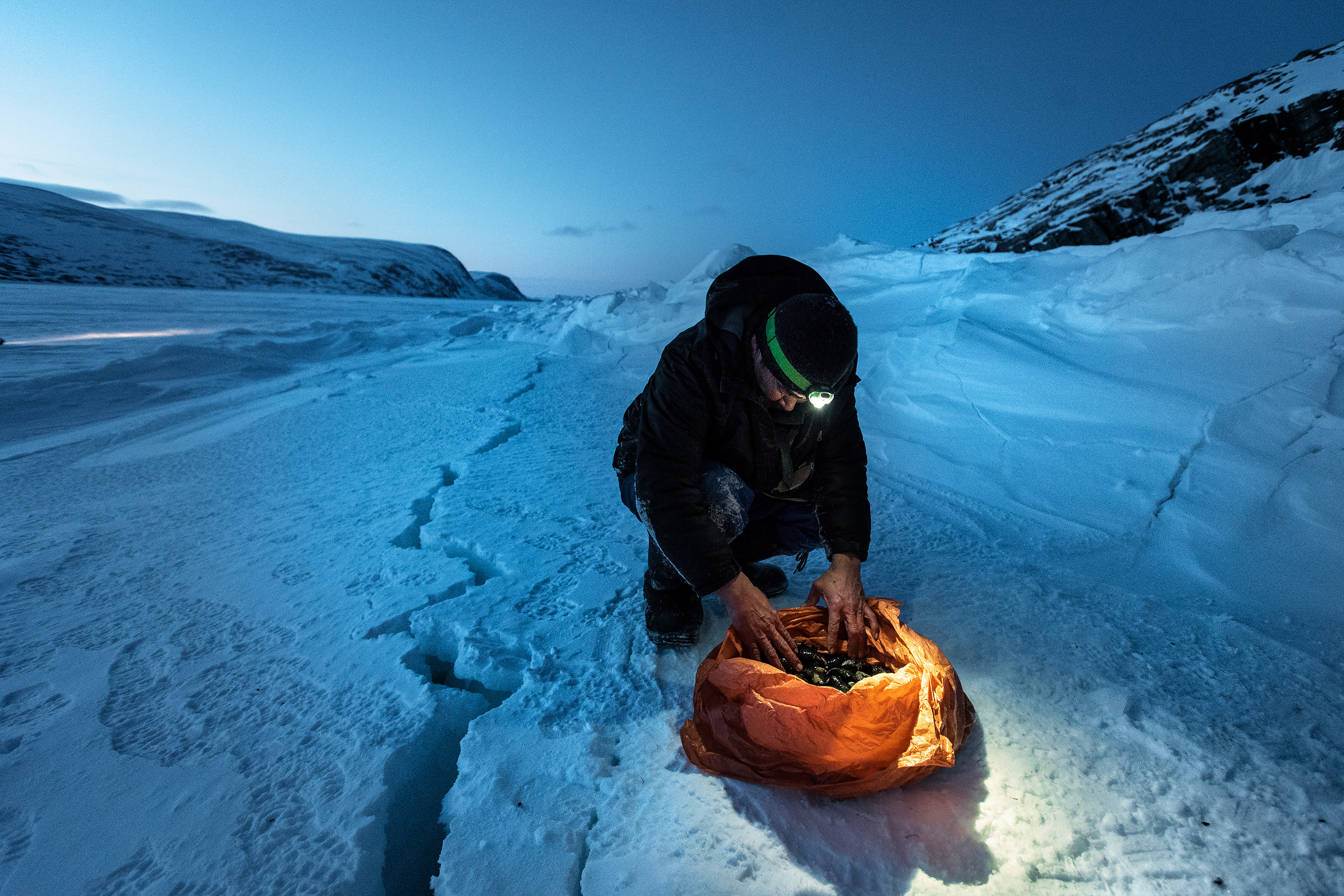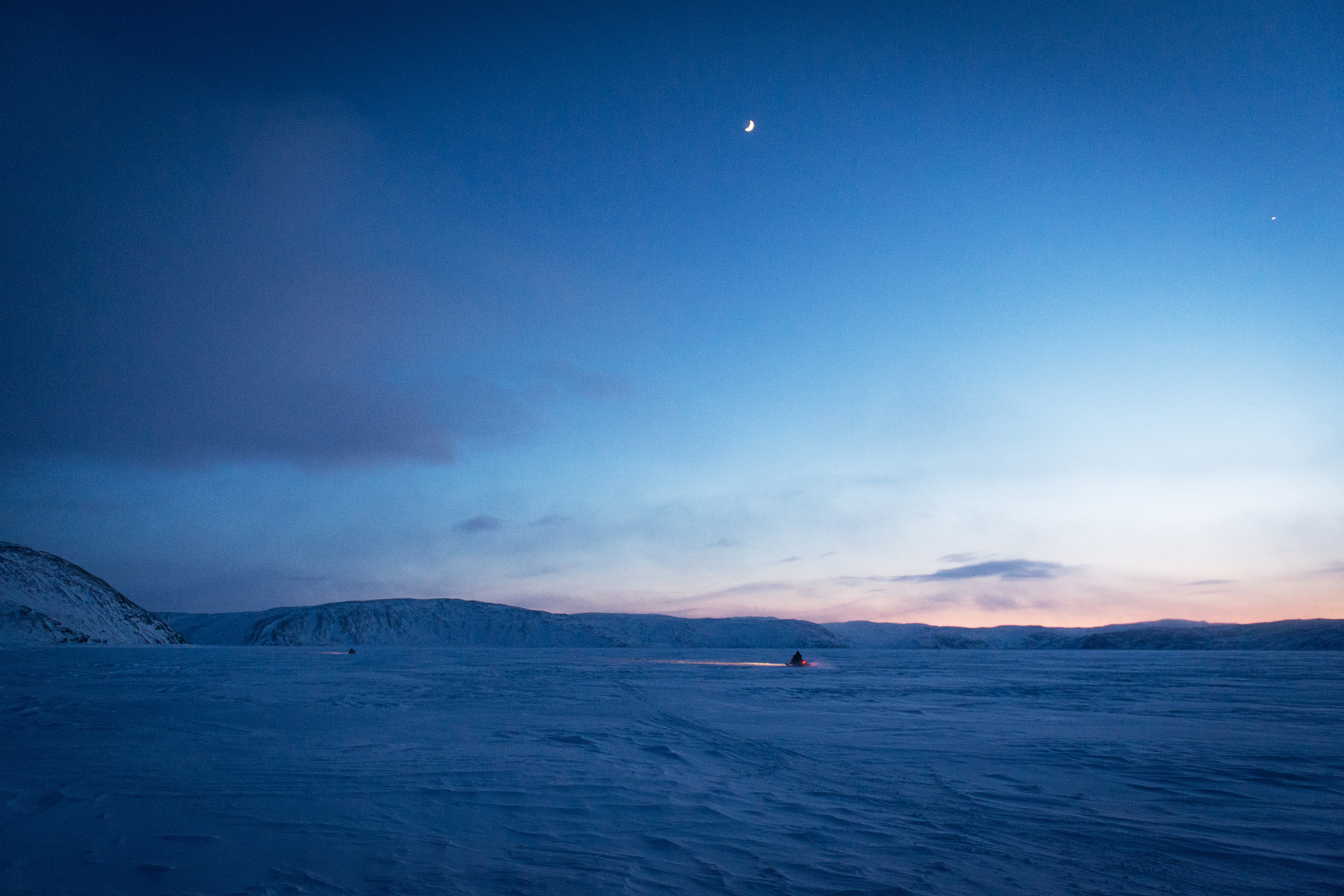Below luminous ice in far northern Quebec, a bounty of mussels
KANGIQSUJUAQ, Quebec — For eight months a year, the flat bay around the village of Kangiqsujuaq in far northern Quebec freezes beneath a white expanse of ice and snow, leaving ravens and foxes as rare signs of life, along with Inuit and their dogs. Throughout the winter the Inuit hunt seal and caribou, and they fish through the ice for arctic char.
But in the coldest months, when the ice is thickest, some venture beneath the ice to gather mussels. Every two weeks the pull of the moon combines with the geography of this region to create unusually large tides. The water falls as much as 55 feet in some places, emptying the bay under the ice along the shore for an hour or more. That’s when some Inuit climb aboard their snowmobiles and head out onto the bay.
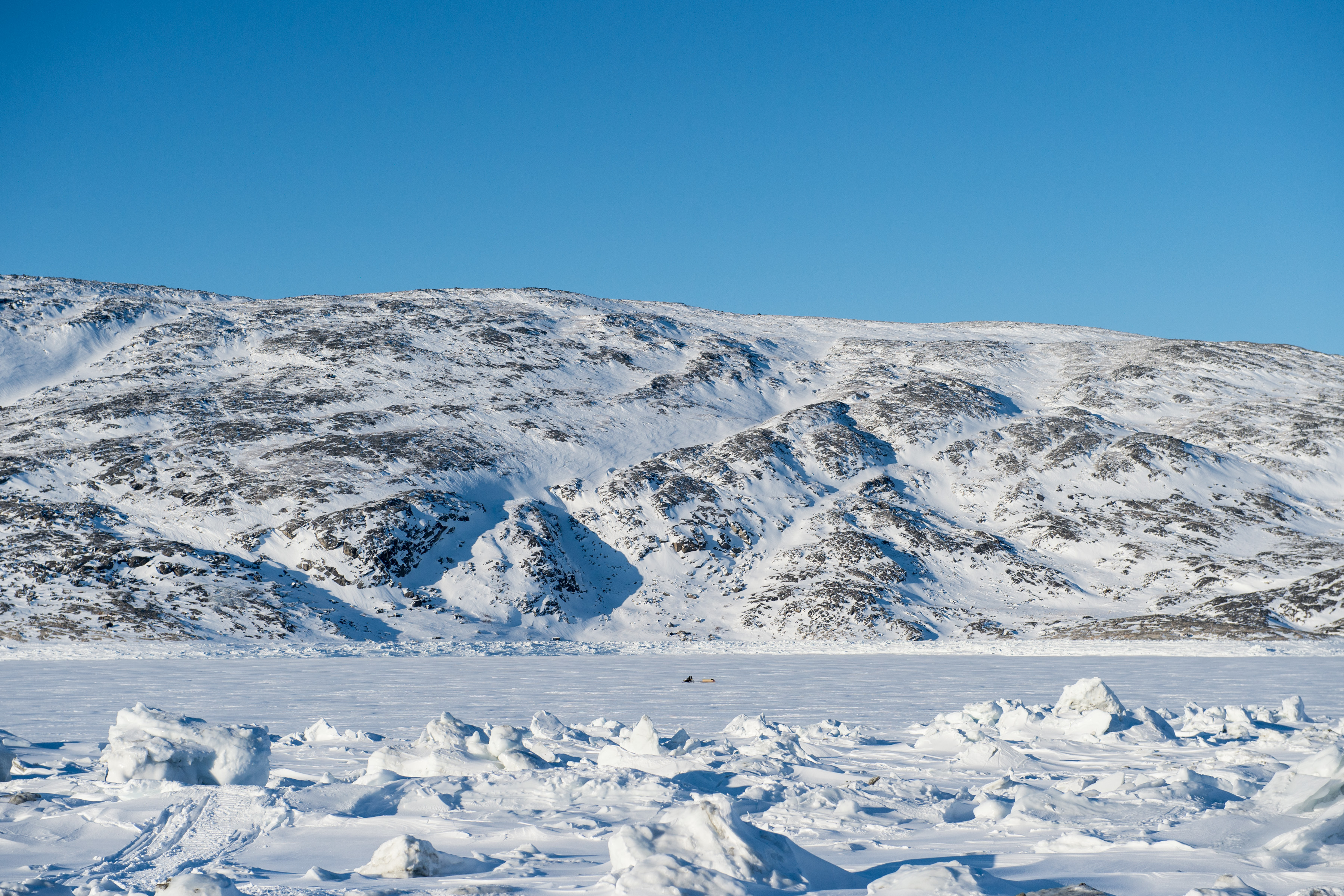
One recent day I joined two of them, Tiisi Qisiiq, 51, and Adami Alaku, 61, who identified a void and chopped a hole into the ice.
Underneath is a beautiful, eerie world of bending ice, glowing blue from the sunlight outside. The sound of trickling water fills the humid, salt-laced air. On my recent trip it was 20 degrees below zero (minus 29 degrees Celsius) but a balmy 32 degrees Fahrenheit (0 degrees Celsius) beneath the ice.
The men lowered themselves through the hole to the bay floor. The ground was covered with kelp, the occasional crab and edible clumps of roe from the fourhorn sculpin, which the Inuit call the ugly fish. But Qisiiq and Alaku came for fat blue mussels that cling to the rocks. Using lamps to light the way, they pulled the frigid mussels free with their hands.
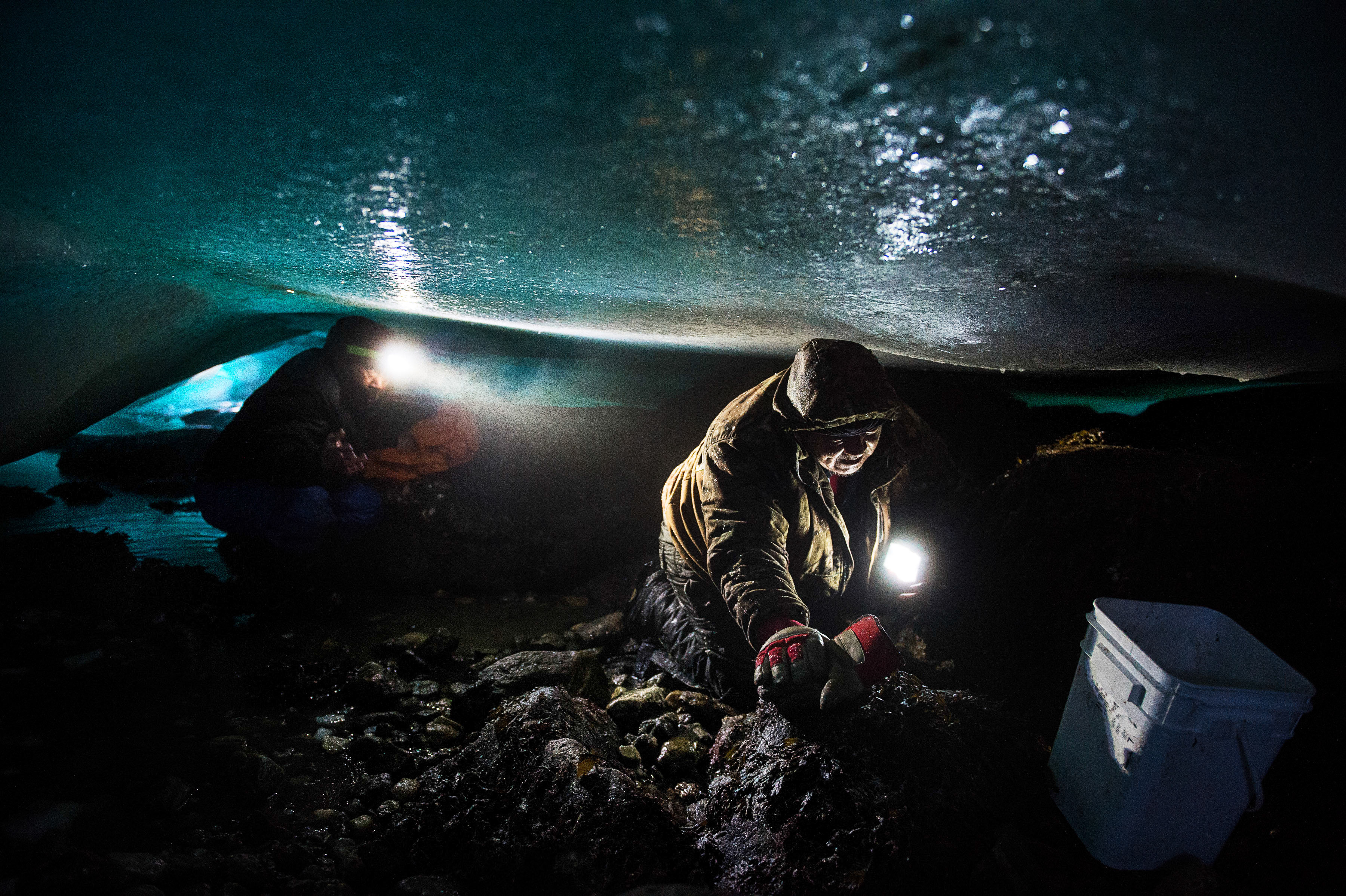
Before long, the sound of ticks and pops signaled the returning tide as it lifted the ice on the bay. Soon, the water would fill the caverns. The flood tide is deceiving, starting slowly until it rises more than a foot (30 centimeters) a minute. The men headed for the hole and climbed out into the clear, cold air.
I first heard of mussel gathering under the ice when I lived in Shanghai and my son was given a children’s book called “Very Last First Time,” by the Canadian author Jan Andrews. It tells the enchanting tale of an Inuit girl’s first time under the ice alone. Ever since, I’ve wanted to go under the ice myself. Now I have, and I saw the bay floor’s bounty brought to the surface.
The book’s drawings depict a colorful, cavernous space beneath the ice, far different from the cramped and narrow confines that I discovered. The colder the winter, the thicker and more stable the ice and the larger the spaces left by the ebbing tide.
Qisiiq’s mentor, Lukasi Nappaaluk, remembers gathering mussels as a child in caverns of ice with ceilings 20 feet high. But global warming is making the ice less predictable and more prone to buckling. Warm water currents thin the ice from below, making the snowmobile crossings increasingly dangerous.
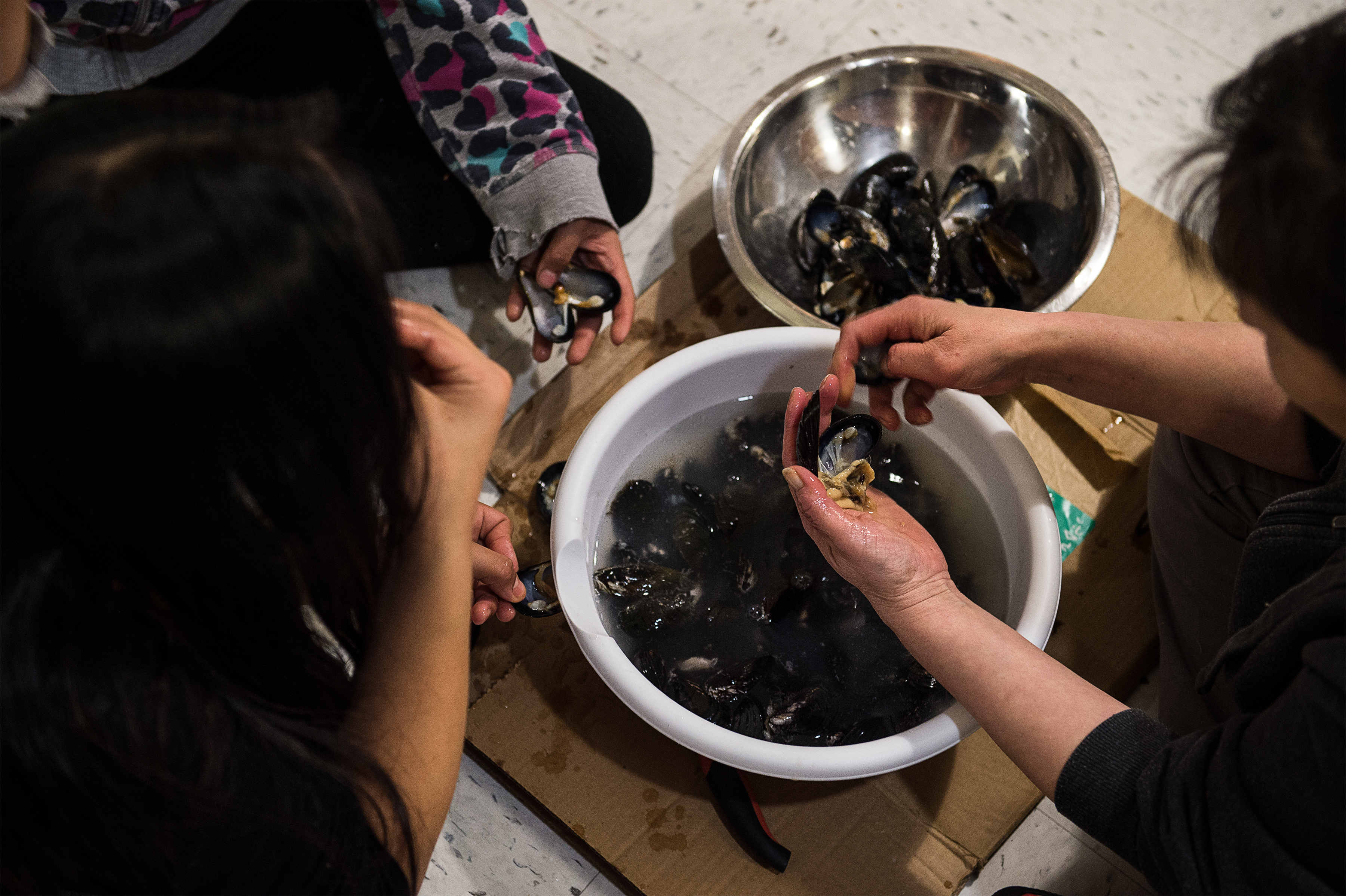
The mussels are a welcome winter treat these days, but at one time they were a lifesaving source of food during the lean frozen months. Raw meat, with its abundance of vitamins, has allowed the Inuit to live for centuries on a diet almost devoid of fruits and vegetables. The only preparation for the mussels is pulling off their beards, the strings of protein that mussels make to cling to rocks, and then rinsing them.
The Inuit still eat a lot of “country food,” caribou and seal and whale and fish that they prefer to eat raw while sitting on the floor.
Mussels are no exception. Qisiiq and his wife, Siasi Qisiiq, shucked the bivalves using the edge of a shell. They scraped out the meat and squeezed it in their fist, wringing out the salty seawater, before eating them as is.
Siasi Qisiiq boiled some of the mussels for me. They were rich and meaty, salty with no seasoning, and steaming — welcome warmth after hours outside. I had some of the raw mussels, too, still chilled from the bay. They tasted a lot like raw oysters, but with a bitter finish. I would prefer them marinara style.
